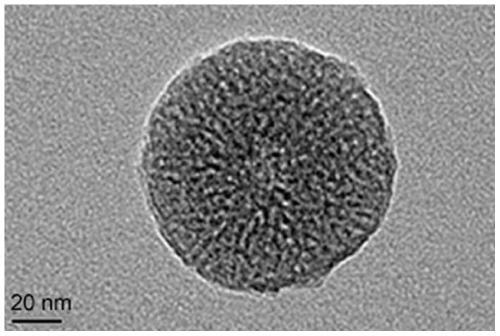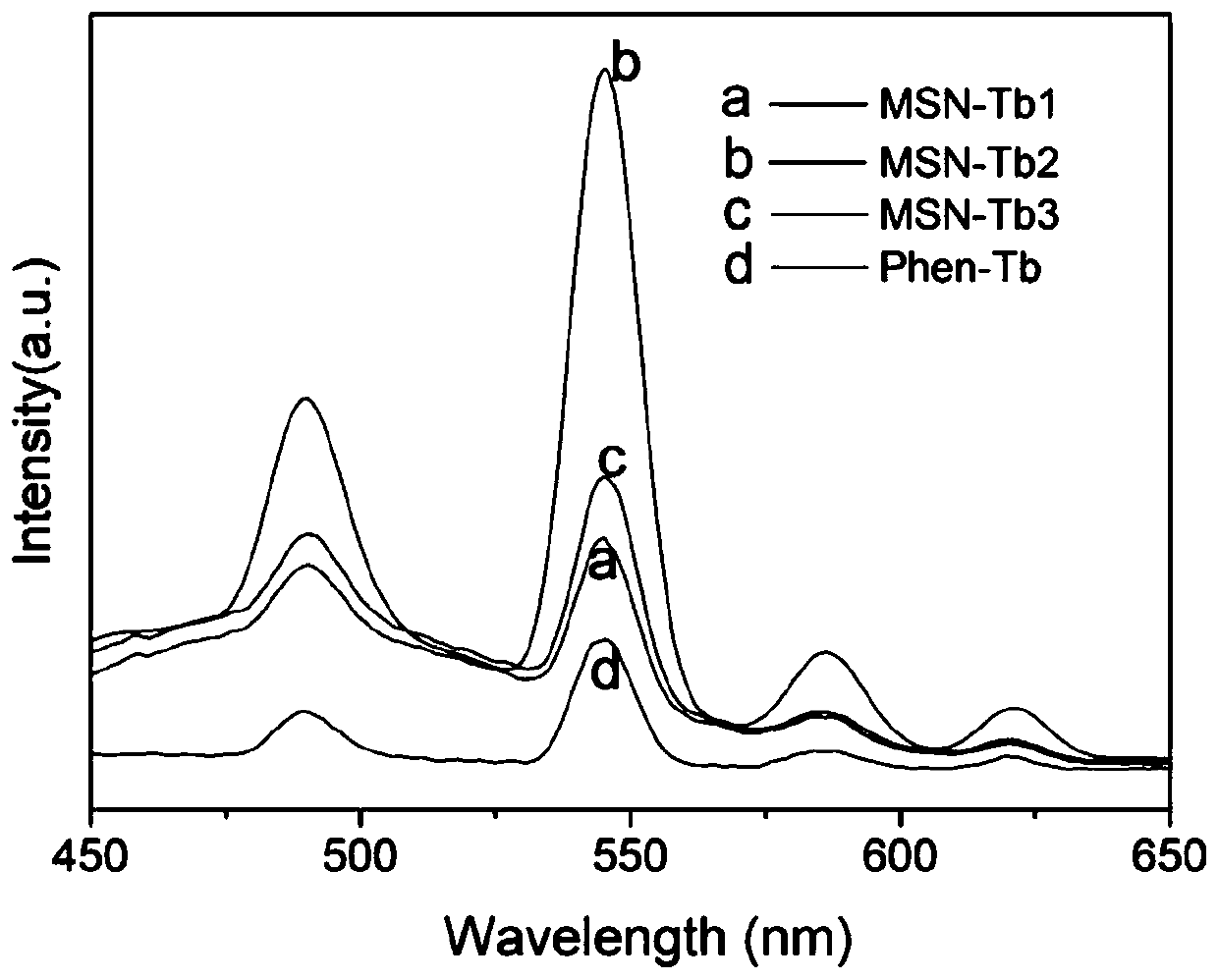Preparation method of nano fluorescent probe for detecting deubiquitination enzyme
A nano-fluorescent probe and deubiquitinating enzyme technology, which is applied in the field of preparation of nano-fluorescent probes, can solve the problems of easy extinguishment of fluorescence, achieve good sensitivity and selectivity, good selectivity, and short preparation cycle
- Summary
- Abstract
- Description
- Claims
- Application Information
AI Technical Summary
Problems solved by technology
Method used
Image
Examples
Embodiment 1
[0057] (1) 1.02mmol 1,10-phenanthroline-5-amine and 1.7mL 3-(triethoxysilyl)propyl isocyanate were stirred in chloroform for 30min, and the chloroform was removed under vacuum at 25°C. The remaining yellow viscous mixture was stirred at 80 °C for another 20 hours. After the reaction, cold hexane was added to the mixture to obtain a pale yellow precipitate, which was then dissolved in methanol and filtered. Methanol was removed by evaporation and washed with cold hexane. The product phenanthroline-silicon was reprecipitated with alkane, and the prepared phenanthroline-silicon was dried in vacuum at 60°C.
[0058] (2) Disperse 500 mg of mesoporous silicon nanoparticles in 10 mL of dichloromethane solution containing 2 mg of phenanthroline-silicon. The reaction was carried out under nitrogen protection at 90 ° C for 12 hours. After the reaction, the prepared mesoporous silicon was collected by filtration. Porous silica-phenanthroline nanoparticles, rinsed with ethanol and dried u...
Embodiment 2
[0063] (1) 1.02mmol 1,10-phenanthroline-5-amine and 1.7mL 3-(triethoxysilyl)propyl isocyanate were stirred in chloroform for 30min, and the chloroform was removed under vacuum at 25°C. The remaining yellow viscous mixture was stirred at 80 °C for another 20 hours. After the reaction, cold hexane was added to the mixture to obtain a pale yellow precipitate, which was then dissolved in methanol and filtered. Methanol was removed by evaporation and washed with cold hexane. The product phenanthroline-silicon was reprecipitated with alkane, and the prepared phenanthroline-silicon was dried in vacuum at 60°C.
[0064] (2) Disperse 500 mg of mesoporous silicon nanoparticles in 10 mL of dichloromethane solution containing 8 mg of phenanthroline-silicon. The reaction was carried out under nitrogen protection at 90 ° C for 12 hours. After the reaction, the prepared mesoporous silicon was collected by filtration. Porous silica-phenanthroline nanoparticles, rinsed with ethanol and dried u...
Embodiment 3
[0069] (1) 1.02mmol 1,10-phenanthroline-5-amine and 1.7mL 3-(triethoxysilyl)propyl isocyanate were stirred in chloroform for 30min, and the chloroform was removed under vacuum at 25°C. The remaining yellow viscous mixture was stirred at 80 °C for another 20 hours. After the reaction, cold hexane was added to the mixture to obtain a pale yellow precipitate, which was then dissolved in methanol and filtered. Methanol was removed by evaporation and washed with cold hexane. The product phenanthroline-silicon was reprecipitated with alkane, and the prepared phenanthroline-silicon was dried in vacuum at 60°C.
[0070] (2) Disperse 500 mg of mesoporous silicon nanoparticles in 10 mL of dichloromethane solution containing 10 mg of phenanthroline-silicon. The reaction was carried out under nitrogen protection at 90° C. and stirred for 12 hours. After the reaction, the prepared mesoporous silicon was collected by filtration. Porous silica-phenanthroline nanoparticles, rinsed with ethano...
PUM
 Login to View More
Login to View More Abstract
Description
Claims
Application Information
 Login to View More
Login to View More - R&D
- Intellectual Property
- Life Sciences
- Materials
- Tech Scout
- Unparalleled Data Quality
- Higher Quality Content
- 60% Fewer Hallucinations
Browse by: Latest US Patents, China's latest patents, Technical Efficacy Thesaurus, Application Domain, Technology Topic, Popular Technical Reports.
© 2025 PatSnap. All rights reserved.Legal|Privacy policy|Modern Slavery Act Transparency Statement|Sitemap|About US| Contact US: help@patsnap.com



